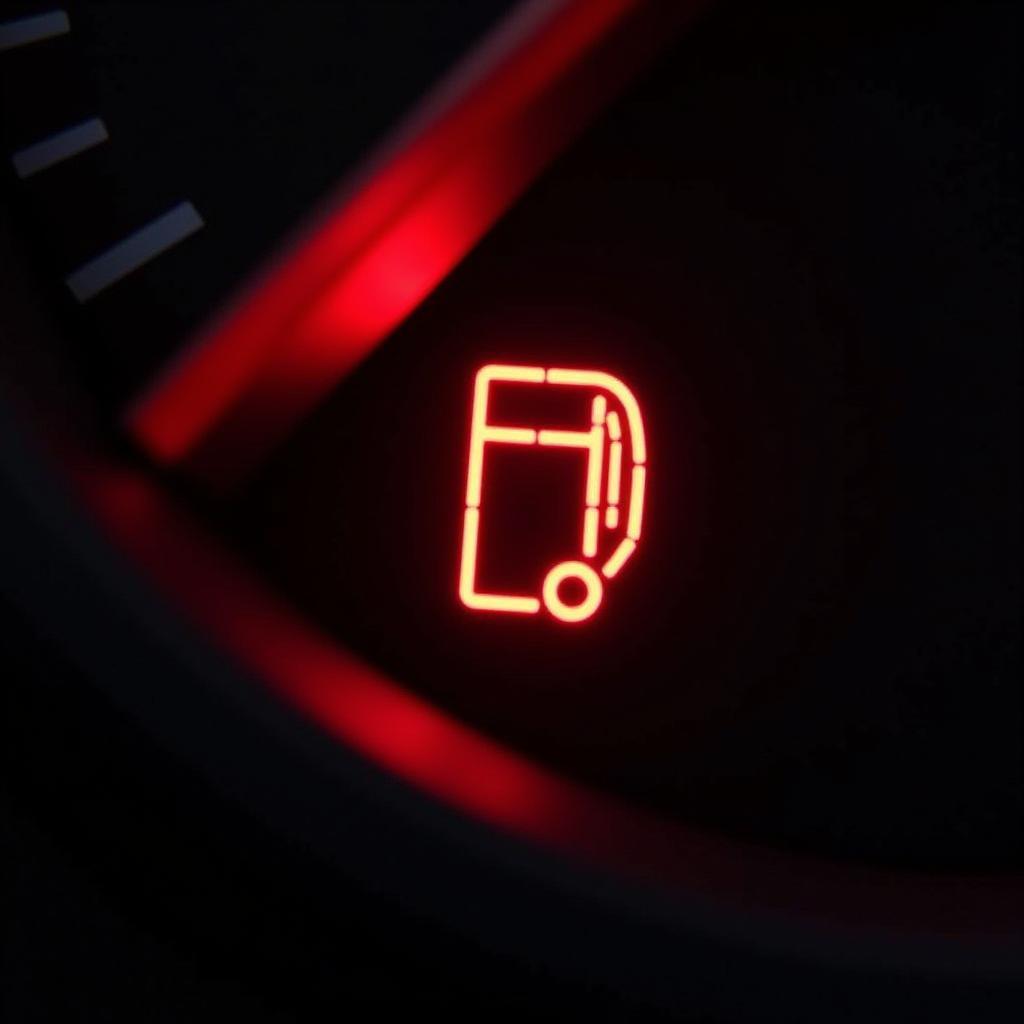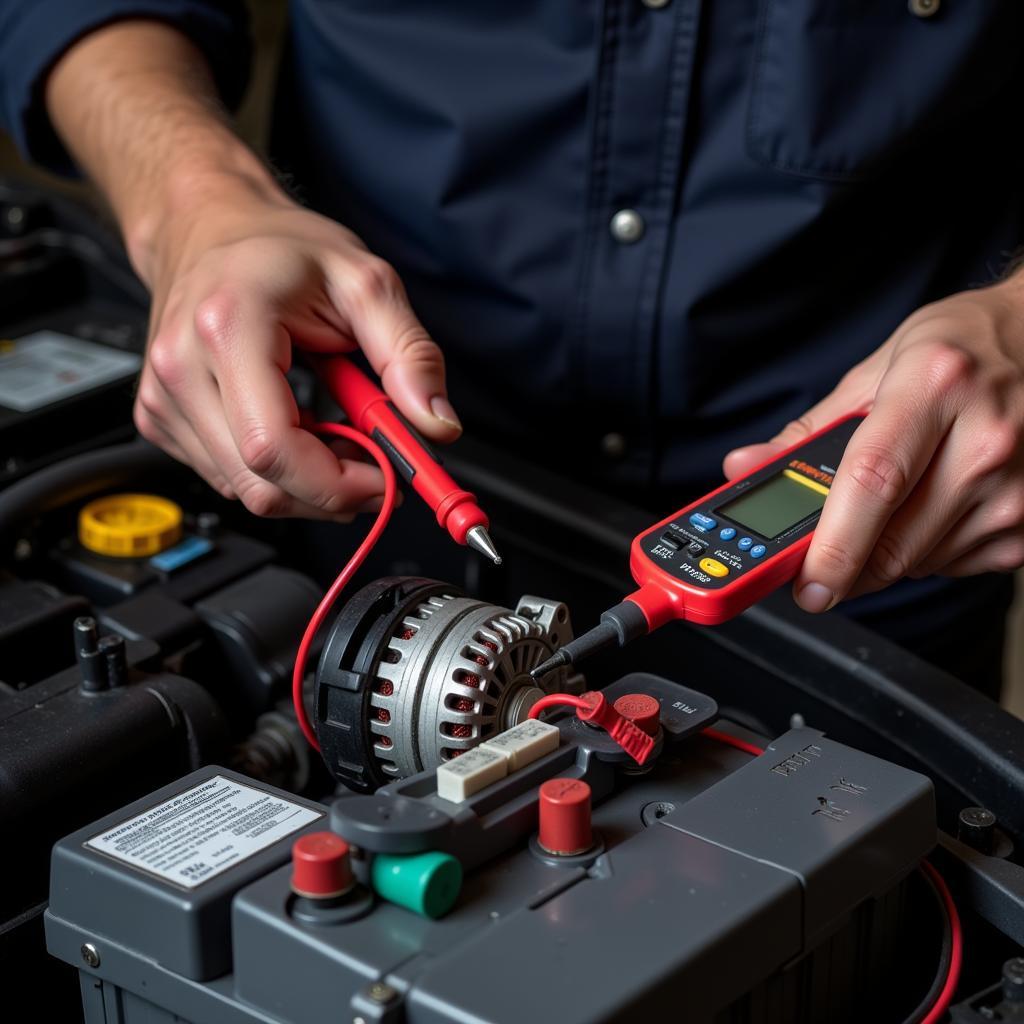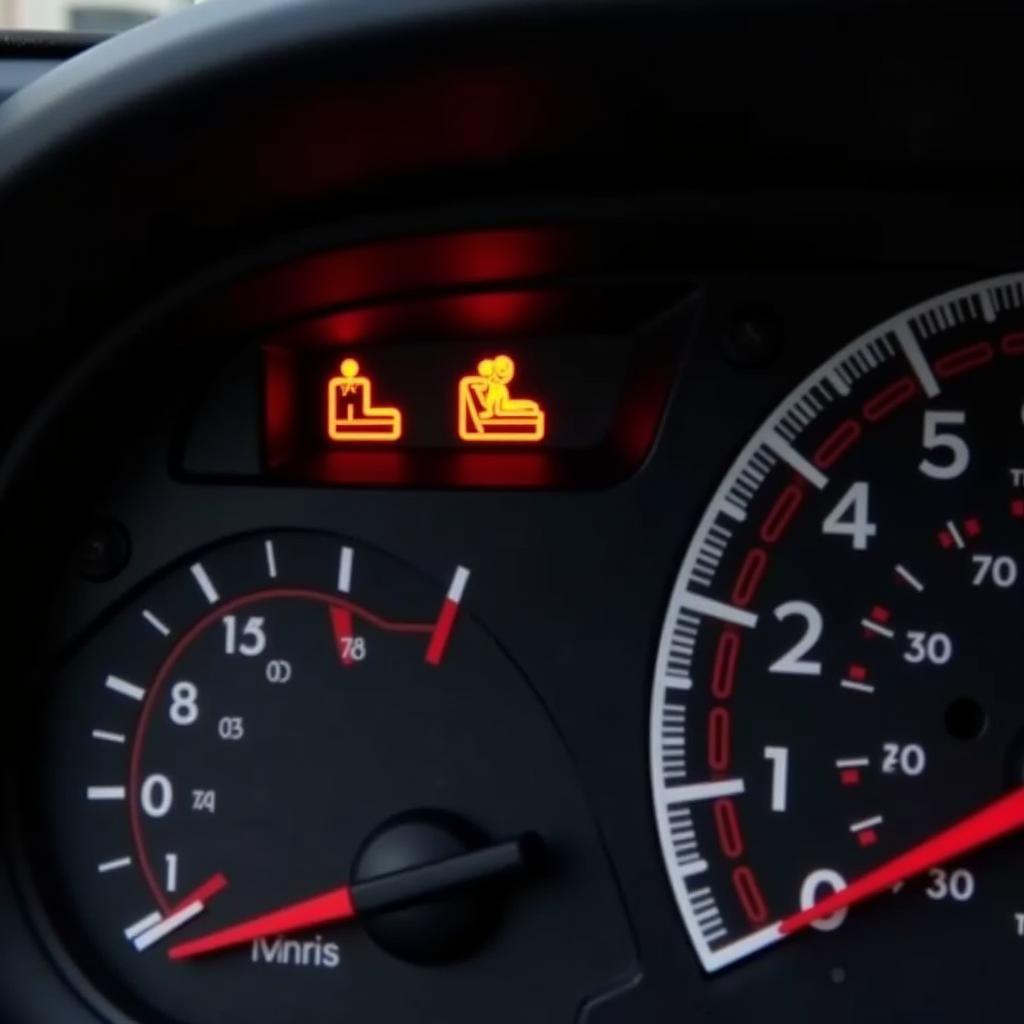The dreaded car brake fluid warning light is something no driver wants to see illuminated on their dashboard. This little light can signal a range of issues from a simple top-up to more serious problems within your braking system. Understanding why this light appears and knowing how to respond can save you from costly repairs and ensure your safety on the road.
Decoding the Car Brake Fluid Warning Light
This warning light, often depicted as an exclamation mark within a circle surrounded by parentheses, typically indicates a drop in brake fluid level. Your car’s braking system relies on hydraulic pressure to function correctly. When you press the brake pedal, brake fluid amplifies this force, pushing the brake pads against the rotors to slow down or stop your vehicle. A decrease in brake fluid can significantly compromise your car’s ability to brake efficiently.
Common Causes of Low Brake Fluid
There are several reasons why your car’s brake fluid level might be low:
- Brake Pad Wear: As your brake pads wear down over time, the brake calipers need more fluid to engage the pads with the rotors. This can lead to a lower fluid level in the reservoir.
- Brake Fluid Leak: A leak anywhere in the braking system, be it the master cylinder, brake lines, or calipers, will result in a loss of brake fluid and trigger the warning light.
- Worn-Out Brake Hoses: Rubber brake hoses can deteriorate with age and develop cracks, leading to brake fluid seepage.
- Internal Leak in the Master Cylinder: The master cylinder is responsible for holding and distributing brake fluid. If the seals inside wear out, an internal leak can occur, leading to a drop in fluid level.
 Car Dashboard Showing Low Brake Fluid Warning
Car Dashboard Showing Low Brake Fluid Warning
What to Do When Your Brake Fluid Warning Light Comes On
1. Stop Driving Immediately: Continuing to drive with low brake fluid is incredibly dangerous. Pull over to a safe location as soon as possible.
2. Check Your Brake Fluid Level: Locate the brake fluid reservoir under the hood of your car. It’s usually a translucent container with a black cap labeled “Brake Fluid.”
3. Add Brake Fluid (If Necessary): If the fluid level is low, carefully add the correct type of brake fluid recommended by your car’s manufacturer until it reaches the “Max” line.
4. Inspect for Leaks: Look for any signs of brake fluid leaks around the master cylinder, brake lines, and near the wheels. Leaking fluid will appear as a clear or yellowish oily substance.
When to Seek Professional Help
While adding brake fluid might seem like a simple fix, it’s crucial to remember that the underlying cause of the low fluid level needs to be addressed. If you experience any of the following, seek professional help immediately:
- The brake fluid warning light comes on frequently, even after adding fluid.
- You notice a soft or spongy brake pedal.
- Your car pulls to one side when braking.
- You hear unusual noises while braking, such as grinding or squealing.
- You see evidence of a brake fluid leak.
The Importance of Regular Brake System Inspections
Regular brake system inspections are vital for maintaining your car’s safety and preventing costly repairs. It’s recommended to have your brakes checked at least once a year or every 12,000 miles. During a brake inspection, a mechanic will:
- Inspect the brake pads and rotors for wear and tear.
- Check the brake fluid level and condition.
- Inspect the brake lines and hoses for leaks or damage.
- Test the functionality of the master cylinder and ABS system.
Conclusion
Ignoring a car brake fluid warning light can have serious consequences. Understanding what causes this warning light to illuminate and taking the appropriate steps to address the issue can help prevent accidents and keep you safe on the road. If you’re ever in doubt, err on the side of caution and consult a qualified mechanic.
For further information on brake warning lights and other related issues, you can explore our resources on brake warning light with different symptoms, brake lining warning light, and electronic park brake warning light.


